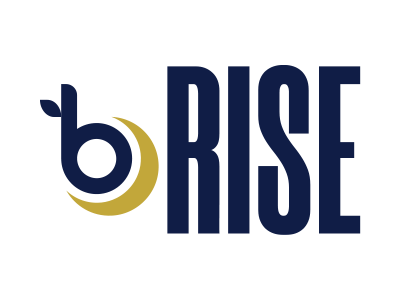
The features described above are only the more common examples, and these are frequently combined in a number of ways. A company can issue preferred shares under almost any set of terms, assuming they don’t fall foul of laws or regulations. Some preferred stock is convertible, meaning it can be exchanged for a given number of common shares under certain circumstances. The board of directors might vote to convert the stock, the investor might have the option to convert, or the stock might have a specified date at which it automatically converts. Whether this is advantageous to the investor depends on the market price of the common stock.
The potential loss of missed dividends, limited protection for investors, and lower priority in liquidation are the main disadvantages of non-cumulative preferred stock. By not accumulating unpaid dividends, non-cumulative preferred stock reduces the company’s financial obligation. By not accumulating unpaid dividends, the company has the option to skip dividend payments during periods of financial strain without incurring a significant future financial obligation.
Non-Cumulative Preferred Stock
You can set the default content filter to expand search across territories. Kiplinger is part of Future plc, an international media group and leading digital publisher. CFI is the official provider of the Commercial Banking & Credit Analyst (CBCA)™ certification program, designed to transform anyone into a world-class financial analyst. Over 1.8 million professionals use CFI to learn accounting, financial analysis, modeling and more. Start with a free account to explore 20+ always-free courses and hundreds of finance templates and cheat sheets.
- In regards to non-cumulative dividends, “dividend in arrears” does not apply.
- (Missing a payment on preferred stock is not considered to be a default event.) Those dividends must then be distributed to preferred shareholders before any dividends can be paid to common stockholders.
- In exchange, preferred shareholders give up the voting rights that benefit common shareholders.
- For example, let’s assume an investor owns a $1,000 par amount corporate bond that can be converted into 20 shares of preferred stock.
- The starting point for research on a specific preferred is the stock’s prospectus, which you can often find online.
Arbitrage Trader, aka Denislav Iliev has been day trading for 15+ years and leads a team of 40 analysts. They identify mispriced investments in fixed-income and closed-end funds based on simple-to-understand financial logic. Their dividends come from the company’s after-tax profits and are taxable to the shareholder (unless held in a tax-advantaged account). Hunkar Ozyasar is the former high-yield bond strategist for Deutsche Bank.
Rights in Liquidation
Our Preferred portfolio has +45 preferred securities from a wide range of industries, targeting a +9% overall yield. If a company has a problem that affects preferred stock, a cumulative preferred stock will not outperform a non-cumulative one. A fast look at the 52 week lows in the energy sector preferred stocks easily proves this fact. There are some preferreds that are not among us anymore and they are not part of the discussion. When a company is in a serious problem even the bonds fall and no one cares about the dividend being cumulative.
In addition, bonds often have a term that mature after a certain amount of time. Preferred stockholders have a higher claim to dividends or asset distribution than common stockholders. Preferred stockholders also stand in line ahead of common stockholders in case of bankruptcy or liquidation. That said, a long list of creditors and bondholders have seniority over preferred shareholders should financial catastrophe strike.
How to Calculate Dividends for Cumulative Preferred Stock
All such information is provided solely for convenience purposes only and all users thereof should be guided accordingly. The right to receive dividends is limited to the current period, and any unpaid dividends do not accumulate or carry forward to subsequent periods. So when prices of such a basket of preferreds https://www.bookstime.com/ drop, buying more and collecting a sizable waiting fee is almost a no-brainer. If the preferred is perpetual, we intend to hold for as long as the investment suits our income requirements. The total value of assets is $1 billion after paying creditors, bondholders, employees, and the government.
The decision to pay the dividend is at the discretion of a company’s board of directors. That is, the issuer reserves the right to redeem the security after a certain period of time has passed. As with bonds, preferred shareholders run the risk that the issuer will exercise its call option when interest rates are low. If common stockholders are at the bottom of the bankruptcy food chain for recouping at least some of their capital, preferred stockholders are closer to the middle – but not by all that much. Most non-FS companies issue cumulative preferreds, allowing missed dividends to be accrued and paid in full when the payments resume.
Investors should also evaluate the financial strength of the issuing company. Companies with a stable financial position and low debt-to-equity ratios may be more reliable in meeting their dividend obligations. PwC refers to the US member firm or one of its subsidiaries or affiliates, and may sometimes refer to the PwC network.
The primary disadvantage of non-cumulative preferred stock is the potential loss of missed dividends. Non-cumulative preferred stock offers several distinct features that investors should be aware of before considering investing in it. Though preferred stock often has greater rights and claims to dividends, this type of investment often does not appreciate in value as much as common stock. In addition, preferred stock holders have little to no say in the operations of the company as they often forego voting capabilities.
Delaying dividend payments can allow an opportunity to regain equilibrium, without putting shareholders at risk of losing out on their investment. Indeed, a good deal of preferred non cumulative preferred stock stock is issued by companies with lower credit ratings. Also, the board of directors can vote to suspend the dividend payments, and the preferred stockholders cannot sue them.

In other words, this kind of stock is “preferred” over the common stock holder. Perpetual preferred stock is a type of preferred stock that pays a fixed dividend to investors for as long as the company remains in business. It does not have a maturity, nor a specific buyback date but does typically have redemption features.

